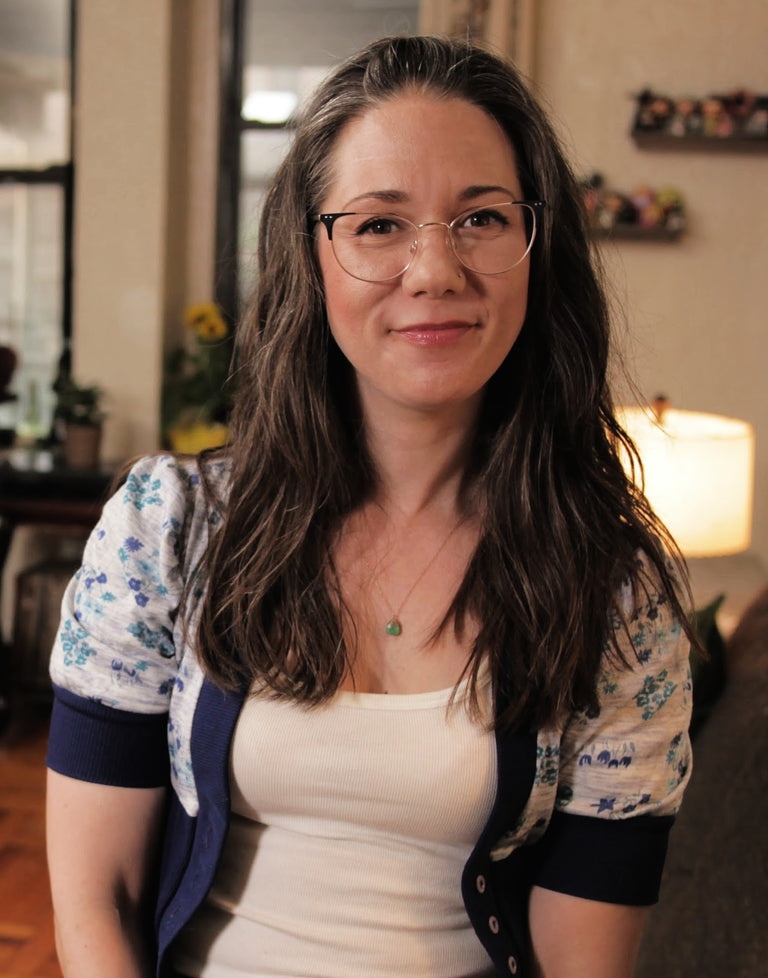Diffuse hair loss, which is an increased rate of hair loss with widespread thinning all over the scalp, can happen for many reasons, including diffuse alopecia areata.
Diffuse alopecia areata is a condition that can present in a similar way to other common causes of hair loss, which, unfortunately, can make it tricky to diagnose. Read on to better understand diffuse alopecia areata and how it’s diagnosed and treated, along with expert tips for managing the condition.
What Is Alopecia Areata?
Alopecia areata is complex and not thoroughly understood. It’s a common autoimmune condition that impacts children and adults and is estimated to impact up to 6.8 million people in the United States.
Diffuse alopecia areata is actually part of a family of hair loss conditions under the alopecia areata umbrella. Alopecia areata is generally considered to be an autoimmune skin disease where the body mistakenly attacks hair follicles in the skin.
While alopecia areata is most often recognized by the patchy hair loss it causes on the scalp, there are several different forms of alopecia areata that vary in hair loss patterns and severity.
- Persistent patchy alopecia: A chronic form of AA, characterized by patchy hair loss that does not resolve or worsen into more severe forms of hair loss.
- Ophiasis alopecia areata: A form of alopecia areata that causes hair loss at the sides and lower back of the scalp in the shape of a band.
- Diffuse alopecia areata: A form of AA that causes widespread scalp hair thinning. Diffuse AA may or may not progress into more severe forms of hair loss.
- Alopecia areata incognita: Similar to diffuse AA in that it also causes thinning over the entire scalp, but this form of AA typically comes on and worsens in a much shorter timeframe than diffuse AA.
- Alopecia totalis: A more severe form of AA that causes complete baldness of the scalp.
- Alopecia universalis: A severe form of AA that causes a complete loss of body hair.
Shop: GRO Collection for Thinning Hair
What Is Diffuse Alopecia Areata?
While several forms of AA are considered to be forms of “focal alopecia,” or hair loss that happens in specific and targeted locations, diffuse AA is a widespread hair loss characterized by thinning over the entire scalp.
“Diffuse alopecia areata is a type of alopecia areata where hair fall is spread out over the scalp and not in the patches that are typical of AA,” said Dr. Viktoryia Kazlouskaya, a dermatologist practicing at the University of Pittsburgh.
Like all members of the AA family, diffuse alopecia areata is a form of non-scarring hair loss. Unlike scarring forms of alopecia, non-scarring forms of hair loss do not cause permanent damage to hair follicles, which means that treatment may encourage hair regrowth.
With that said, all forms of AA can be sporadic, difficult to treat and unpredictable. Not only that, but diffuse alopecia areata can look like several different forms of hair loss, making it tricky to diagnose.
Diffuse Alopecia Areata vs. Other Forms of Diffuse Hair Loss
Diffuse hair loss, or hair loss that is spread out evenly across the scalp, is one of the most common patterns of hair loss, but it can be caused by a variety of underlying conditions.
Here are a few of the most common causes of diffuse hair thinning:
Androgenetic Alopecia
Androgenetic alopecia is one of the most common forms of hair loss, impacting about 50 million men and 30 million women in the United States. You might know this hair loss condition by one of its more common names, including androgenic alopecia, female pattern baldness, male pattern baldness, female pattern hair loss, or male pattern hair loss.
-
As you might expect with a condition called “pattern baldness,” this form of hair loss often progresses in a common focal pattern, as opposed to a diffuse one. But androgenetic alopecia can cause diffuse hair loss, too, particularly in cases of female androgenetic alopecia.
Androgenetic hair loss is believed to be caused by a genetic predisposition that causes hair follicles to develop a sensitivity to a group of hormones called androgens.
Find Out: Everything You Need to Know About Androgenetic Alopecia
Telogen Effluvium
Telogen effluvium is another common form of hair loss that is typically temporary and reversible. It’s often triggered by intense physical or psychological stressors, such as severe illness, surgery, childbirth or the loss of a job or loved one.
The shock to the body caused by the intense stressor sends a disproportionate number of hair follicles from the active stage of growth (called the anagen phase) to a resting phase (called the telogen phase). This resting period lasts for about three months when a sudden and drastic bout of excessive hair shedding starts. Because of this, diffuse telogen hair loss can be alarming since most people don’t make the connection to the stressor as being the source of their hair loss.
While chronic telogen effluvium is possible (though rare), the excessive shedding that is caused by TE is diffuse, typically only temporary and most often resolves on its own. By the time the hair loss is noticed, the follicles are already cycling back into an active growth phase, and hair growth generally gets back to normal within a year.
More: Telogen Effluvium Explained
Anagen Effluvium
Like telogen effluvium, anagen effluvium is caused by a direct and drastic impact on our hair growth cycle. Anagen effluvium causes sudden and drastic hair loss over the entire scalp.
While telogen effluvium impacts follicles by causing them to move through the hair growth cycle faster than they would have normally, anagen effluvium shuts down growth without the resting period, causing the follicles to release hair that is actively growing (anagen hair). Because the majority of follicles are in the anagen phase at any given time, this leads to near-complete or complete hair loss. This form of hair loss is most often caused by damage to the follicle resulting from inflammation or a toxin, such as chemotherapy drugs.
Alopecia Areata Incognita
Alopecia areata incognita is often equated with diffuse AA because they both cause diffuse hair thinning on the scalp. Neither is well-studied or understood, but studies suggest they are meaningfully different conditions. Both conditions seem to be most prevalent in young women, but alopecia areata incognita may progress more quickly than diffuse alopecia areata.
Shop: Nicole Franzel's Healthy Hair Product Picks
What Causes Diffuse Alopecia Areata?
While alopecia areata is believed to be an autoimmune skin disease, this family of hair loss conditions is not well understood. Research suggests that important structures such as the hair follicle melanocytes, dermal papilla cells and keratinocytes are mistakenly targeted and damaged by the immune system, resulting in hair loss.
In addition to the immune system, research has also uncovered a connection between the nervous system and genetic factors, though these relationships need more study. It’s also believed that diffuse AA may be accompanied by more inflammation and a quicker progression than the more typical patchy form of alopecia areata.
How Is Diffuse AA Diagnosed?
If you notice increased hair shedding or that your hair feels thinner than it used to, see a doctor. As with all forms of hair loss, identifying it and treating it early will increase your chances of hair regrowth and effective management. You can see your primary care physician, although a dermatologist or trichologist may be better equipped to diagnose your hair loss.
“Since it may be very similar to telogen effluvium or androgenetic alopecia, you need an experienced provider to properly identify the diffuse form of alopecia areata,” said Dr. Kazlouskaya.
A dermatologist, for example, will discuss your symptoms and go over your general medical history before examining your scalp. She will likely perform a hair pull test, which is just as it sounds — grasping a small section of hair and gently pulling it to see how much hair comes out. A positive hair pull test means there is active hair loss. The dermatologist might also examine your scalp with a trichoscope, which can give her information about hair fiber growth.
The dermatologist will also look for exclamation point hairs and broken hairs, which are common occurrences with alopecia areata. An exclamation point hair gets its name from the fact that it looks like an inverted exclamation point. These are short, fine hairs that are thicker at the top and thinner closer to the scalp. Your doctor may also take a complete blood count through blood testing and a small scalp biopsy to aid in the diagnosis.
How Is Diffuse Alopecia Areata Treated?
With all types of alopecia areata, hair loss, regrowth and recovery can be cyclical and unpredictable, which can make treatment and management challenging.
Currently, there is no cure for alopecia areata, though there are several commonly used treatments like corticosteroid injections to the hair loss regions, topical hair loss medications like minoxidil, topical corticosteroids and topical or oral immunotherapies.
Some topical treatments, such as dinitrochlorobenzene, work by creating allergic contact dermatitis in the skin of the affected areas. These trigger an immune response that encourages the follicle to begin growing hair again.
Ultimately, treatment will depend on how severe the diffuse alopecia areata is. One small study showed that topical steroids were very effective in patients with diffuse AA, where 21 out of 22 female patients saw hair regrowth after one year of treatment.
The Takeaway
Diffuse alopecia areata is part of a family of autoimmune diseases that fall under the umbrella of alopecia areata. While alopecia areata is known for the round patches of hair loss commonly associated with it, diffuse AA seems to share similar autoimmune dysfunction, but it causes widespread loss over the whole scalp.
Since diffuse hair thinning is a symptom of several different hair loss conditions, it can be challenging to diagnose diffuse alopecia areata. If you’ve noticed increased hair shedding or your hair seems to be less dense and full, see a doctor or dermatologist who can get to the root of your hair shedding and provide a targeted treatment plan. Also consider natural products designed to combat thinning hair.
#include-related-slider#
More From VEGAMOUR
- Shop: Best Products for Thinning Hair
- 6 Times You Should See a Trichologist
- 7 Autoimmune Diseases That Cause Hair Loss
Photo credit: Lisa/Pexels



















